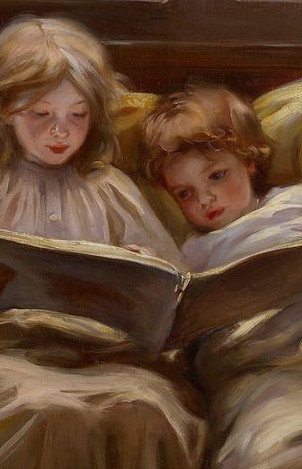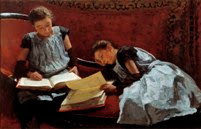Literacy Blogs
- All
- 3-cueing
- academic learning time
- academic vocabulary
- accommodations
- accountability testing
- Active View of Reading
- adolescent literacy
- afterschool programs
- alphabet
- amount of instruction
- amount of reading
- argument
- assessment
- auding
- author awareness
- automaticity
- balanced literacy
- beginning reading
- Book Buddies
- Book Flood
- challenging text
- classroom organization
- close reading
- coaching
- cohesion
- Common Core State Standards
- complex text
- comprehension strategies
- content area reading
- context analysis
- curriculum materials
- Daily 5
- decoding
- departmentalization
- DIBELS
- dictionary skills
- digital texts
- disciplinary literacy
- dyslexia
- early interventions
- effective teachers
- Emily Hanford
- executive function
- family literacy
- fingerpoint reading
- foundational skills
- graphic novels
- guided reading
- heterogeneous grouping of students
- homework
- improving reading achievement
- independent reading
- independent reading level
- informal reading inventories
- informational texts
- instructional level
- invented spelling
- jigsaw instruction
- knowledge
- leadership
- learning disabilities
- Lexiles
- linguistic comprehension
- listening comprehension
- literacy charities
- literacy policy
- literary interpretation
- main idea
- morphology
- motivation
- narrative text
- National Early Literacy Panel
- nonsense words
- oral language
- oral reading fluency
- paraphrasing
- Pause, Prompt, Praise (3P)
- personalized learning
- phonemes
- phonemic awareness
- phonics
- press and media
- principals
- prosody
- Readers' Workshop
- reading comprehension
- reading disabilities
- reading intervention
- reading levels
- reading models
- Reading Recovery
- reading research
- reading skills
- reading strategies
- reading to children
- reading wars
- reading-writing relations
- remedial reading
- rereading
- Response to Intervention
- Scarborough's Rope
- science of reading
- seatwork
- semantics
- sentence comprehension
- sequence of instruction
- set for consistency
- set for variability
- shared reading
- shared reading
- sight vocabulary
- simple view of reading
- Simple View of Reading
- small group instruction
- social studies
- sound walls
- Special Education
- speech-to-print phonics
- spelling
- stamina
- summarizing
- Sustained Silent Reading
- syllabication
- syntax
- syntax
- testing
- text complexity
- text interpretation
- text reading fluency
- text structure
- theme
- think-pair-share
- trauma
- visualization
- vocabulary
- word walls
- writing
- zone of proximal development (ZPD)
Close Reading of Informational Text
"Close reading" is a colloquial term used by scholars in several fields of study. Prior to its re-emergence as a big idea since Common Core has lionized it, Cyndie Shanahan and I did a study with mathematicians, historians, and chemists. Several of these disciplinary experts mentioned close reading, though they clearly didn't all mean the same thing. Only in literature or, more exactly, literary criticism, is close reading used as a term of art. The conception of close reading that is embodied in the Common Core standards is the one drawn from literature. However, it is ...
Is There Research on that Intervention?
Teacher question: I am a reading specialist working in an urban school district with struggling readers in K-5. Do you have any suggestions on intervention programs that you find the most beneficial to students? Currently, we are using LLI (Fountas and Pinnell), Sonday, Read Naturally and Soar to Success, at the interventionist's discretion. Is there any research supporting or refuting these programs? Is there another program that you find more effective? We also use Fast Forward and Lexia as computer-based interventions. What does the research say about these tools? Shanahan response: The best place to get this kind of information is the What Works Clearinghouse (WWC). ...
How Publishers Can Screw Up the Common Core
Lexiles and other readability measures are criticized these days about as much as Congress. But unlike Congress they don’t deserve it. Everyone knows Grapes of Wrath is harder to read than predicted. But for every book with a hinky readability score many others are placed just right. These formulas certainly are not perfect, but they are easy to use and they make more accurate guesses than we can without them. So what’s the problem? Readability measures do a great job of predicting reading comprehension, but they provide lousy writing guidance. Let’s say that you have a text that comes out harder than you’d hoped. You wanted it ...
Are the SBAC and PARCC Technology Requirements Fair?
Teacher question: I am a 4th grade math teacher, and I love CC standards. I’ve been teaching to them and my students are making HUGE gains in math. My question is about PARCC. I have looked online at the protocol questions and cannot figure out what students will really be expected to do. It looks like they will need to cut, paste, and type. My fear is that the online component of the test is going to skew the results and students will be unnecessarily frustrated trying to show their thinking using "tools". It seems the test is automatically biased towards wealthier ...
Grammar and Comprehension: Scaffolding Student Interpretation of Complex Sentences
Teacher question: I'm a fourth grade special education teacher in NYC. Our school has acquired a new reading/writing program and has discontinued a grammar program we've used for several years. In the new program the grammar component is virtually non-existent. On a gut level I feel that students are struggling with test questions, even math ones, due to lack of practice/knowledge of grammar. They simply don't understand what the questions are asking. I was wondering what your opinion/research shows as far as the relationship between grammar instruction and reading comprehension. Do you have any preference as far as grammar programs/teaching methodologies go? Shanahan response: Great ...
How Bad Are the Common Core Lessons on the Gettysburg Address? And Other Insights
My friends at the Thomas Fordham Institute asked that I weigh in on the controversy over the close reading lessons being touted by School Achievement Partners. I wrote a blog for their site and have included a link to it here. You might be interested in my assessment of those lessons and on some of their claims about close reading. Here it is: Commentary on Gettysburg Address Close Reading Lessons Since I was posting that article, I thought it would be a good time to provide a couple of other links. This fall, I had an article in American Educator about how ...
The Close Reading of Historical Documents
A colleague sent me this link from the Washington Post. He is especially interested in history and he wrote to me about this lesson plan. Needless to say, he was horrified, and wanted me to explain how Common Core could promote such anti-historical thinking (an instructional approach that seems like an affront to historians and history teachers everywhere). http://www.washingtonpost.com/blogs/answer-sheet/wp/2013/11/19/common-cores-odd-approach-to-teaching-gettysburg-address/ Here was my answer: The problem here is that different disciplines conceptualize close reading differently. In literature/English, the idea is to give a close analysis of the language and rhetoric of this kind of text (and the lesson in the link you sent me ...
What is the Biggest Educational Change Promoted by Common Core?
What is the biggest educational change promoted by the Common Core? There are so many choices: kids will be reading more challenging texts; close reading will revolutionize the reading lessons; high school English, science, and social studies teachers will teach disciplinary literacy; there will be greater attention to argument, multiple text, informational text, and writing from sources, and so on? So which is the biggest change? Perhaps one that you haven’t even thought of… Past standards were long lists of skills, knowledge, and strategies; lists so endless that they were less standards than curriculum guides. Until CCSS, the typical standards looked like a ...
Who's Right on Text Complexity?
Teacher question: It seems that there is a lot of conflicting information coming out about accuracy and complex text. In the April edition of The Reading Teacher, Richard Allington wrote an article pertaining to struggling readers. In this article he says that there are studies showing the benefits to teaching children using text where their accuracy is high. Our district just raised the running record accuracy rate expectation to 95-98% accuracy based on the current research. Yet, your blog postings pull in the opposite direction. How do teachers know what is right and what is wrong? After all, teachers want to ...
Which Second-Graders Are Going to Make a Lot of Money?
Since James Coleman’s landmark report about inequality in the 1960s, it has been common knowledge in education that there is a close relationship between parents’ socioeconomic status (SES) and and their children’s school achievement. The statistics have consistently shown the injustice of a system in which the children from the least advantaged economic circumstances attain the lowest levels of literacy. Let’s turn the world on its head. Recently, I came across a fascinating new investigation of the relationship between reading achievement and SES conducted by Stuart Ritchie and Timothy Bates and reported earlier this year in Psychological Sciences. They aren’t educators and they weren’t ...

-2.jpg)



-Mother-and-child.jpg)


-Reading-girl-among-birches-on-a-hillside.jpg)